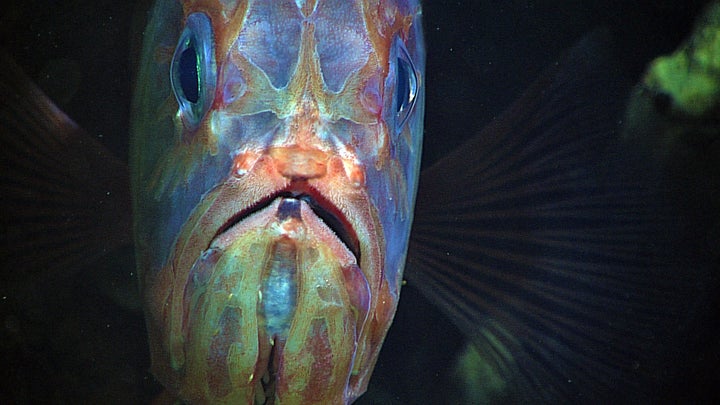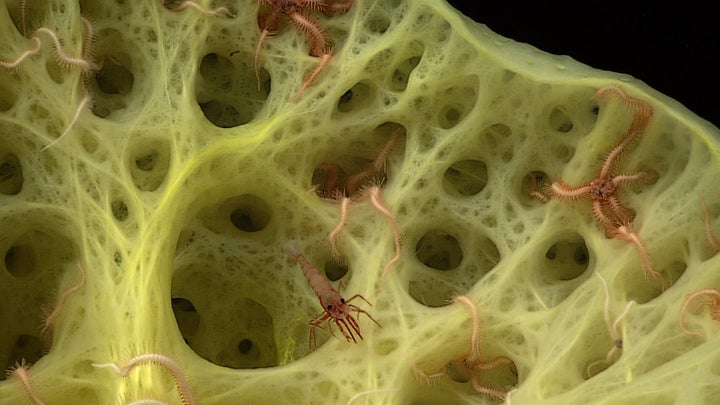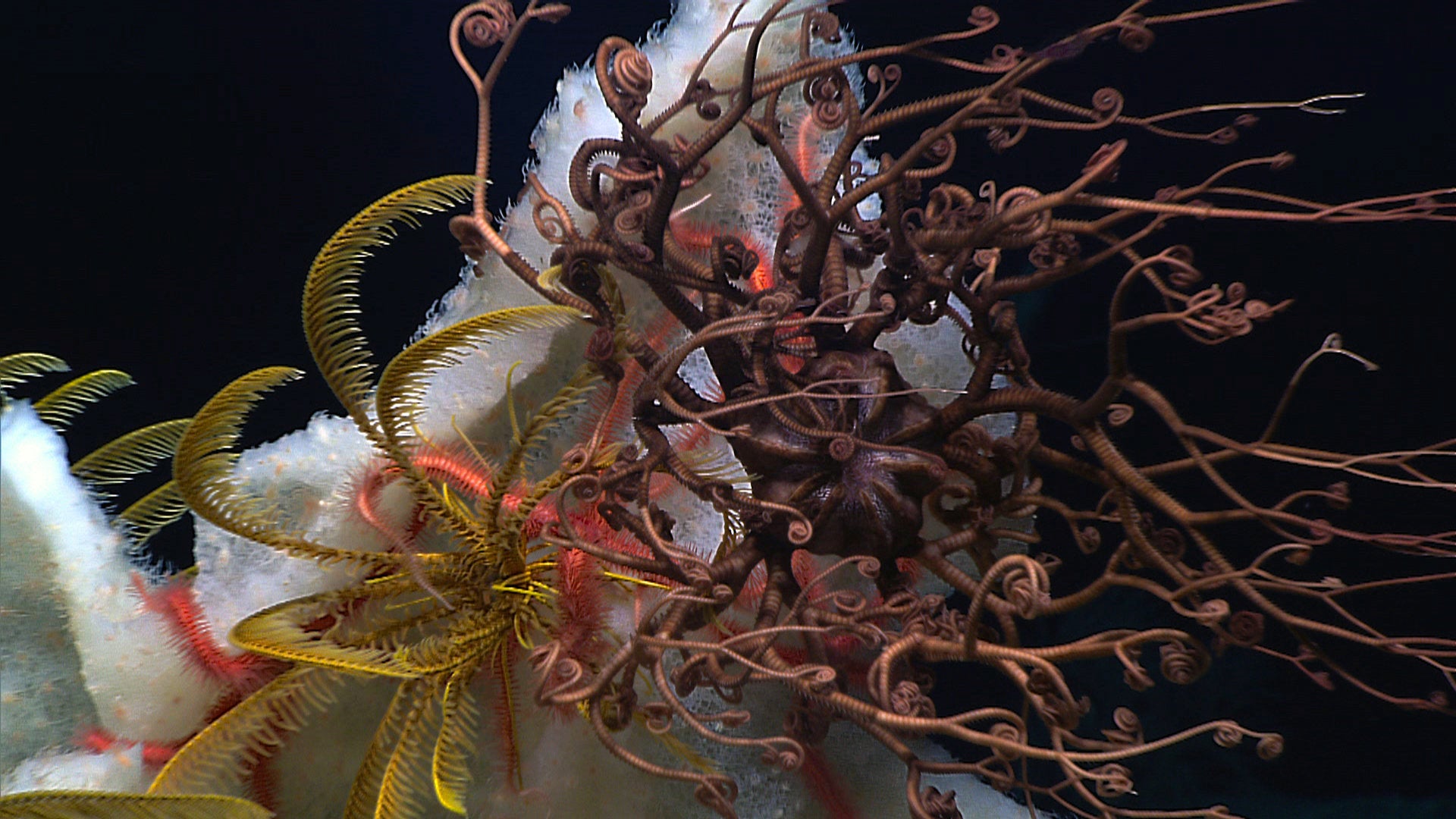The deep, dark ocean waters surrounding Hawaii are, in fact, a colorful and vibrant world of coral, fish and other bizarre creatures.
Last month, a team of scientists with the National Oceanic and Atmospheric Administration set out on a 69-day expedition called "Hohonu Moana" ("Deep Ocean," in the Hawaiian language). Their goal? To investigate some of the Hawaiian archipelago's most remote and unexplored waters.
The photos and videos they've captured thus far are nothing short of magnificent.

Hoplostethus crassispinus -- a member of the same genus as its relative, the orange roughy.
Using remotely operated vehicles launched from NOAA's 224-foot Okeanos Explorer ship, the operation crew is exploring the waters in and around the Papahānaumokuākea Marine National Monument in the Northwestern Hawaiian Islands. They're also investigating Johnston Atoll in the Pacific Remote Islands Marine National Monument, as well as the Hawaiian Islands Humpback Whale National Marine Sanctuary.
“These areas represent some of the last relatively pristine marine ecosystems on the planet,” said Holly Bamford, assistant NOAA administrator for the National Ocean Service, in a July statement.

A squid, Walvisteuthis youngorum, at a depth of 900 meters.
Best of all, NOAA is live-streaming its exploration through the end of September, allowing the public to join in on the fun miles below the surface.
On Thursday, the research team wrapped up the third of four mission legs with a dive around the USS S-19, a decommissioned Navy submarine that was sunk off the coast of Hawaii in 1938. As the remotely operated vehicle cruised around the coral-covered sub, one scientist asked the cameraman to zoom in on a bright red-and-orange fish in the sea toad family that was resting on the hull.
"Fish love their history," someone joked. "They really appreciate it."
After some discussion of the animal's awkward features -- including its fuzzy nose and apparently "poor hygiene" -- someone else said, "He's got an expression on his face that says 'How long do I have to put up with this abuse?'"

A large stalked sponge (Bolosoma sp.) provides a home for several brittlestars.
The goals of the Hohonu Moana mission include identifying and characterizing vulnerable marine habitats and collecting information on the complex geological history of the Central Pacific seamounts.
“Given the unexplored nature of these areas, their remoteness and their known status as biodiversity hotspots, I’d be very surprised if we didn’t see many animals and phenomena that are new to science,” said Christopher Kelley, expedition science team lead and an associate professor of biology at the University of Hawaii at Manoa, in the same July statement.
NOAA says the work around Johnston Atoll will be the largest scientific effort conducted there since President Barack Obama expanded the Pacific Remote Islands Marine National Monument one year ago.
See below for more otherworldly critters photographed during the Hohonu Moana expedition.

